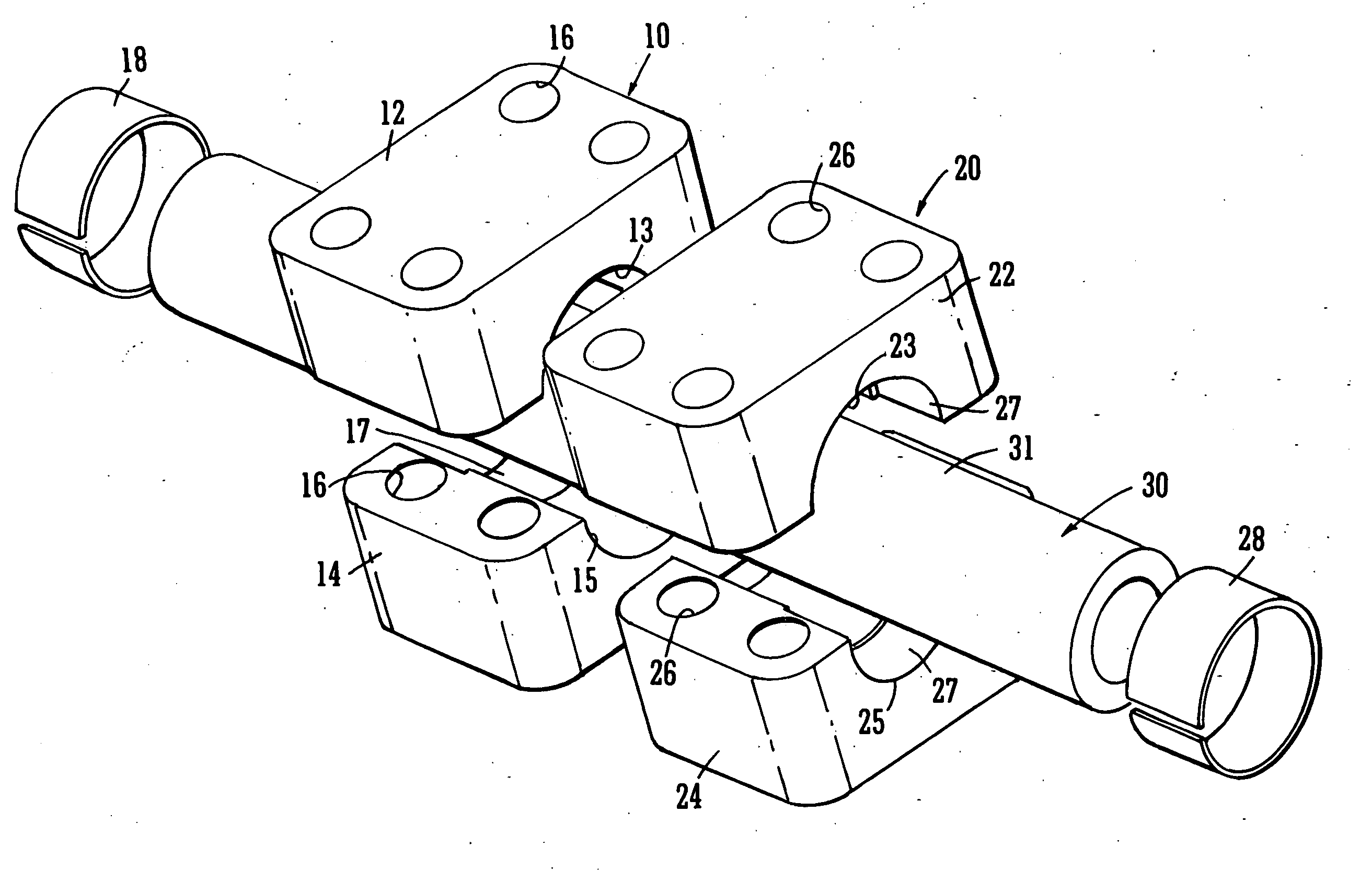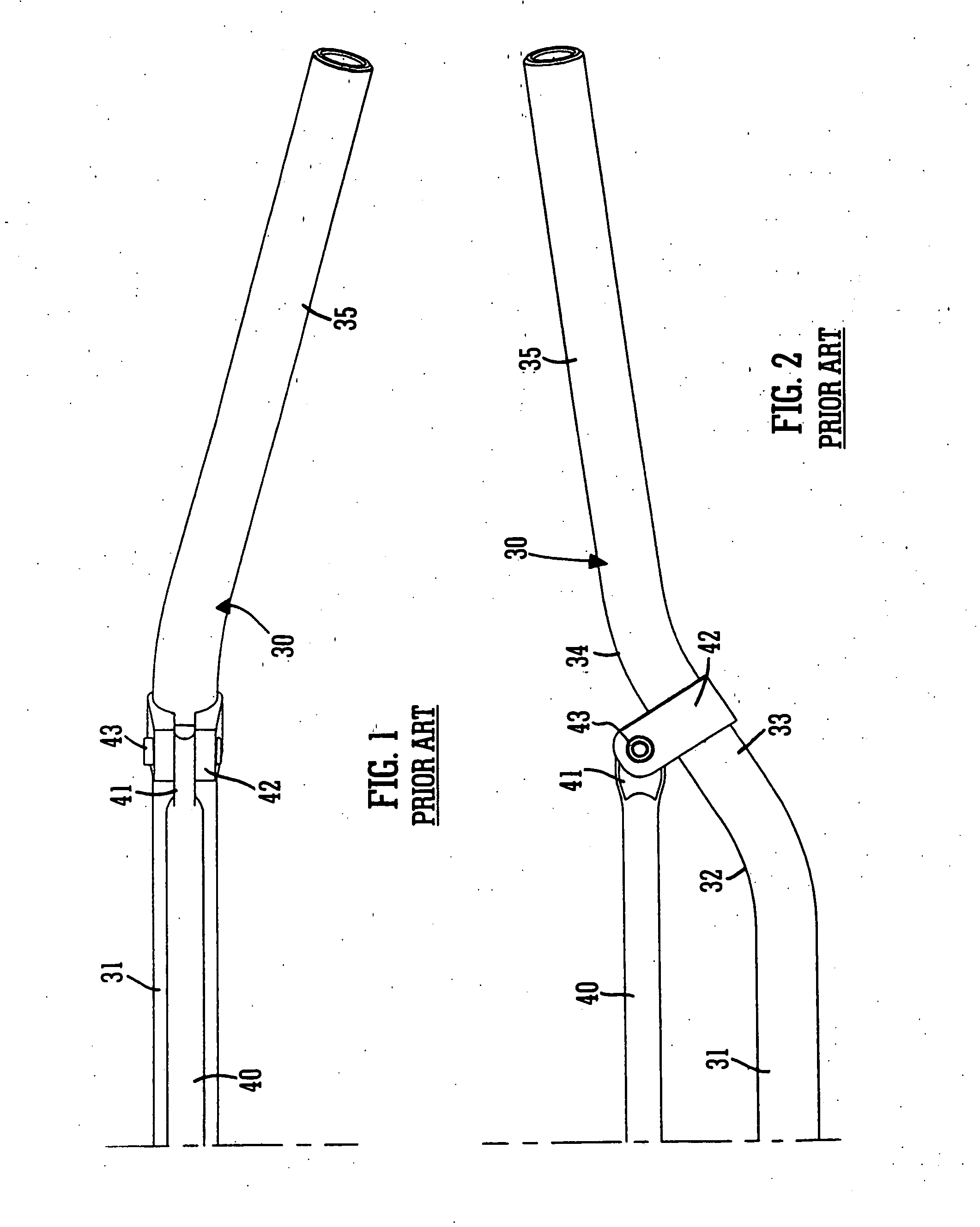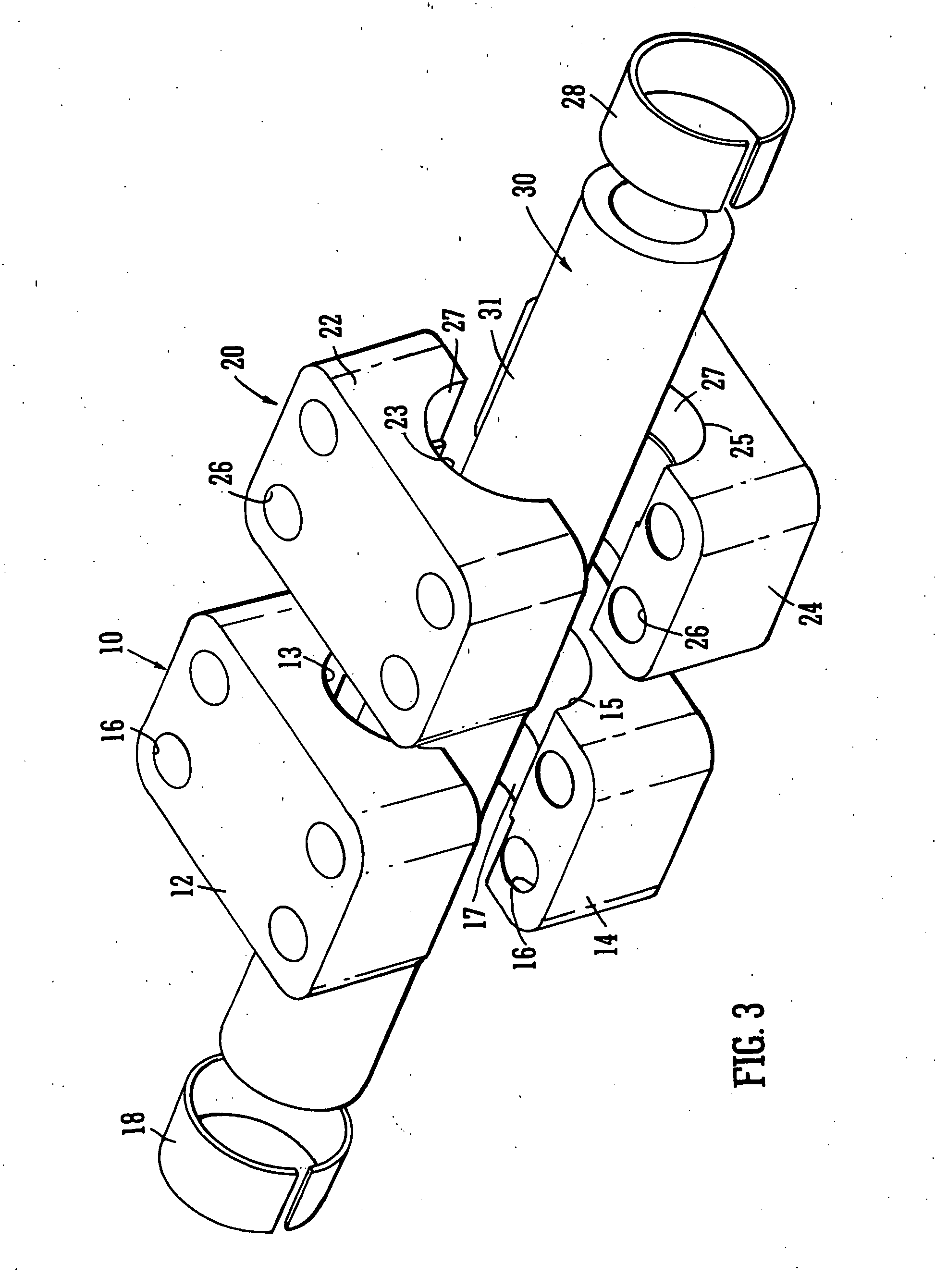Handlebar clamp
a technology for clamping handlebars and handlebars, which is applied in the direction of steering devices, cycle equipments, mechanical apparatus, etc., can solve the problems of determining the fretting amount between the handlebar and the clamp, and achieve the effects of reducing compressive stress, preventing deformation and tensile stress, and preventing any fretting damag
- Summary
- Abstract
- Description
- Claims
- Application Information
AI Technical Summary
Benefits of technology
Problems solved by technology
Method used
Image
Examples
Embodiment Construction
[0029]FIGS. 1 and 2 show the configuration of a conventional 7 / 8 inch (22.23 mm) diameter motorcycle handlebar 30. The other half is, of course, symmetrical. A central section 31 leads at each end, via a proximal bend 32 to an intermediate or bent section 33. This leads, via a respective distal bend 34 to a respective end section 35, which is also bent out of the plane of the central and intermediate sections 31, 33 as is apparent from FIG. 1. The handlebar 30 is typically of tubular form, i.e. hollow, and of an aluminium alloy, although steel handlebars are also known. A cross brace 40, which is a simple rod of the same metal or alloy formed with flattened straps or ears 41 at each end is fitted between the intermediate or bent sections 33 by means of respective cross brace clamps 42. Each cross brace clamp 42 surrounds the bar 30 and has opposed end margins which are secured. In the illustrated version they are secured by a bolt 43 which also extends through the end 41 of the cros...
PUM
 Login to View More
Login to View More Abstract
Description
Claims
Application Information
 Login to View More
Login to View More - R&D
- Intellectual Property
- Life Sciences
- Materials
- Tech Scout
- Unparalleled Data Quality
- Higher Quality Content
- 60% Fewer Hallucinations
Browse by: Latest US Patents, China's latest patents, Technical Efficacy Thesaurus, Application Domain, Technology Topic, Popular Technical Reports.
© 2025 PatSnap. All rights reserved.Legal|Privacy policy|Modern Slavery Act Transparency Statement|Sitemap|About US| Contact US: help@patsnap.com



